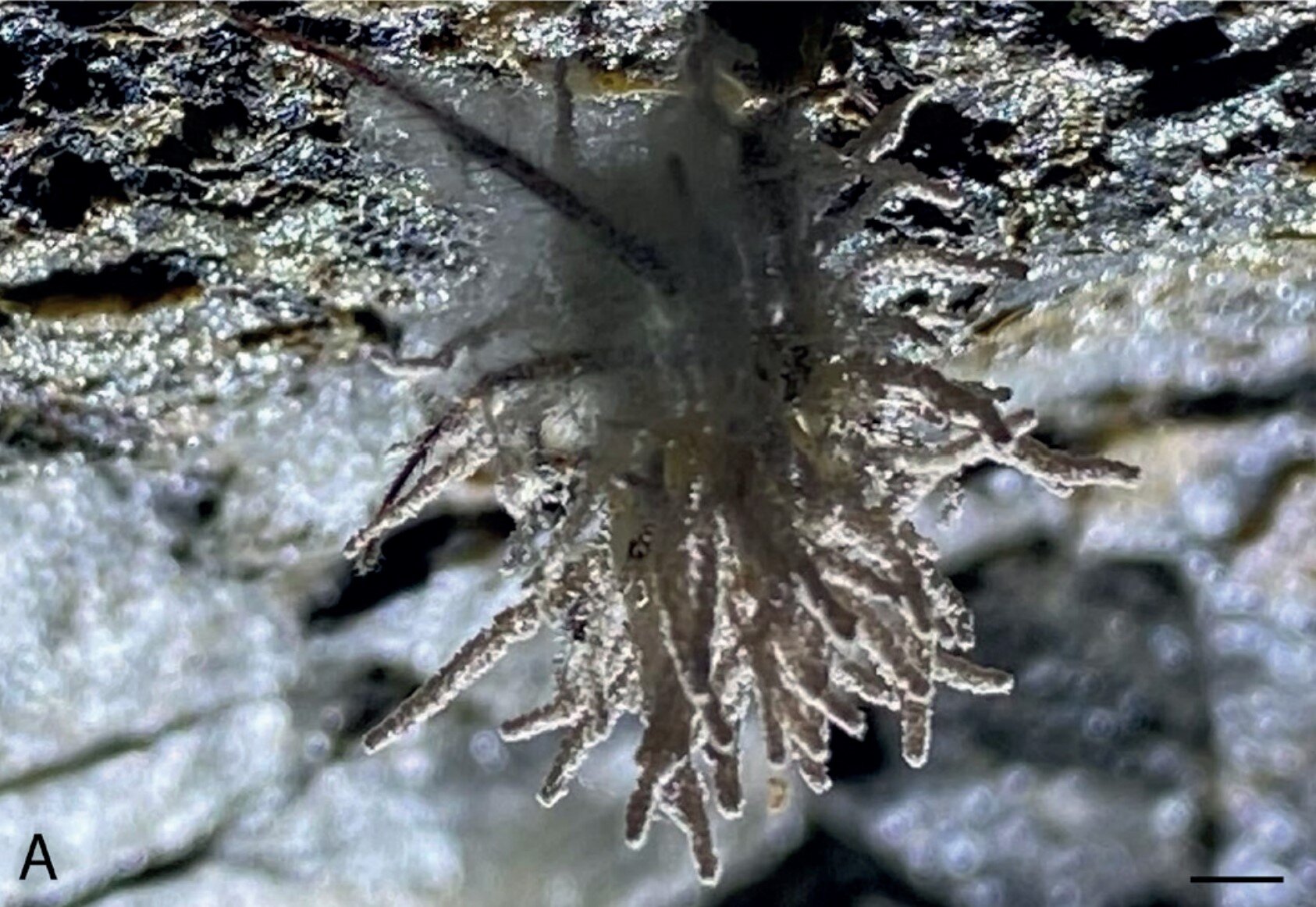Discovery of zombie spiders during a scientific documentary shoot 🕷️
Follow us on Google News (click on ☆)

The fungus Gibellula attenboroughii on the web-weaving spider.
Credit: CABI
The researchers, led by Dr. Harry Evans, used morphological and molecular evidence to identify this new species. The fungus was discovered during the filming of the BBC series Winterwatch, highlighting the importance of science outreach programs, even in the context of discovering new species.
The host spider, Metellina merianae, was identified as a cave-dwelling species. Additional specimens of Gibellula attenboroughii were found in cave systems in Northern Ireland and the Republic of Ireland, as well as on a related spider, Meta menardi. These findings suggest a specific adaptation of the fungus to its environment.
The infected spiders were found in exposed positions, a behavior similar to that of ants infected by fungi of the genus Ophiocordyceps. This phenomenon shows how fungi manipulate their hosts, turning them into 'zombies' to promote the dispersal of their spores.
The scientists also explored historical archives and literary research to reveal a hidden diversity within the Gibellula genus in the British Isles. These studies highlighted epidemics of diseases affecting spider populations, emphasizing the importance of these fungi in spider population dynamics.

Gibellula attenboroughii on Metallina merianae on the ceiling of a cave, Tullybelcoo Ground Bridge, County Fermanagh, Northern Ireland.
Credit: Fungal Systematics and Evolution (2025).
The metabolites produced by these fungi, capable of altering the behavior of their hosts, open new perspectives for research in ecology and molecular biology. These discoveries underscore the importance of continuing to study these complex interactions to better understand ecosystems.
How do fungi manipulate their hosts?
Parasitic fungi, such as Gibellula attenboroughii, have developed sophisticated strategies to manipulate the behavior of their hosts. By producing specific metabolites, they can alter the host's nervous system, forcing it to adopt behaviors that promote the dispersal of the fungus's spores.
These interactions are an example of coevolution, where two species mutually influence each other's evolution. Fungi manipulate their hosts to maximize their own survival and reproduction, while hosts develop defense mechanisms to resist these manipulations.
Studies on these fungi open important perspectives for understanding complex biological interactions and could have applications in agriculture and medicine, particularly in the development of new biological agents for parasite control.
What is the importance of caves in the discovery of new species?
Caves, often considered extreme environments, are home to unique and largely unexplored biodiversity. These isolated ecosystems offer specific conditions that favor the evolution of specialized species, such as the fungus Gibellula attenboroughii.
The discovery of new species in caves highlights the importance of these habitats for biodiversity conservation. Caves can serve as refuges for rare or threatened species, and their study can reveal valuable information about the evolution and adaptation of organisms to extreme conditions.
Research in these environments requires specific techniques and interdisciplinary collaboration, combining biology, geology, and technology to explore and document these unique ecosystems.